

Göttingen
from my revisit in 1991
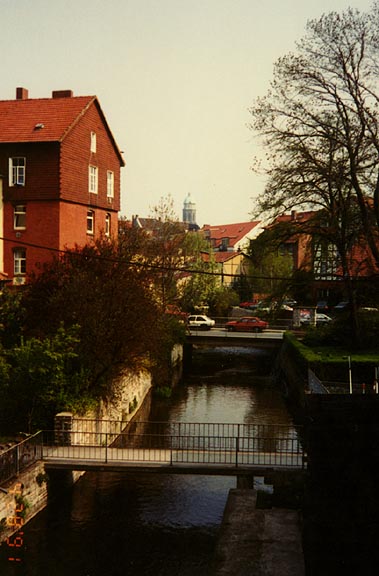
on the Leine canal
Göttingen
, city in central Germany on the Leine Canal, near the Leine River, in Lower Saxony (Niedersachsen). Manufactures include optical and precision instruments, textiles, paper products, chemicals, printed materials, and processed food.
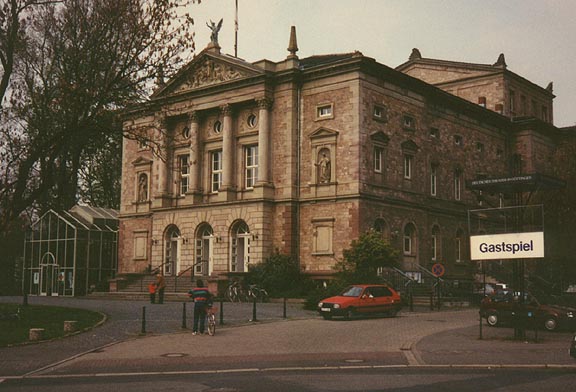
Deutches Theater
The city is also a noted center of higher learning. It is the seat of the Georgia Augusta University at Göttingen, founded in 1737 by the elector of Hannover (later George II of England).

Gauss and Weber
noted scientists
Faculty at the university have included 30 winners of Nobel Prizes, such as chemist Otto Hahn, and physicists Max Born, James Franck, Werner Heisenberg, and Max Theodor Felix von Laue. Otto von Bismarck, Heinrich Heine, and Henry Wadsworth Longfellow were students at Georgia Augusta.
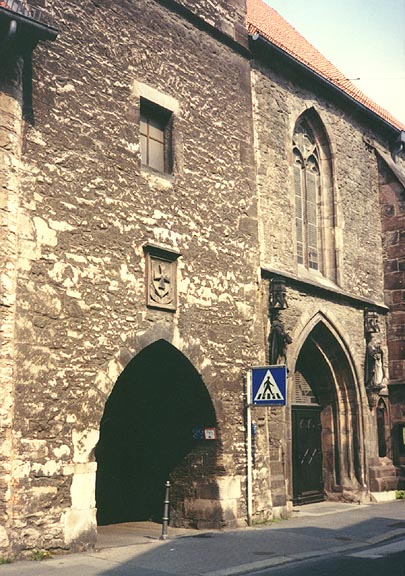
entrance to Mariankirke
Several research institutes of the Max Planck Society for the Advancement of Science are in the city. Points of interest in Göttingen include the city hall (14th-15th century), several churches dating from the 14th to the 16th century, many half-timber houses, and the municipal museum, featuring displays of religious art.
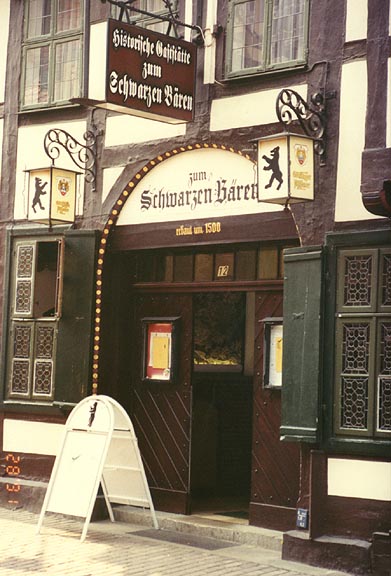
The Black Bear
(oldest restaurant in town, about 1500 constructed)
Mentioned in 953, Göttingen was chartered about 1210 and was for a long time a member of the Hanseatic League. The city grew under Prussian rule in the 19th century. Population (1997) 127,519.
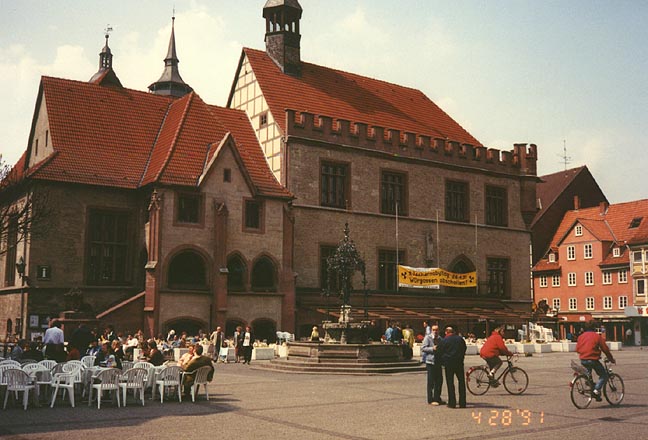
city hall
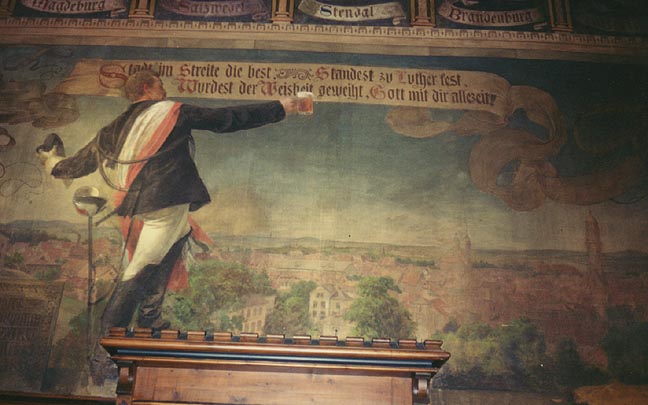
mural on the interior of city hall
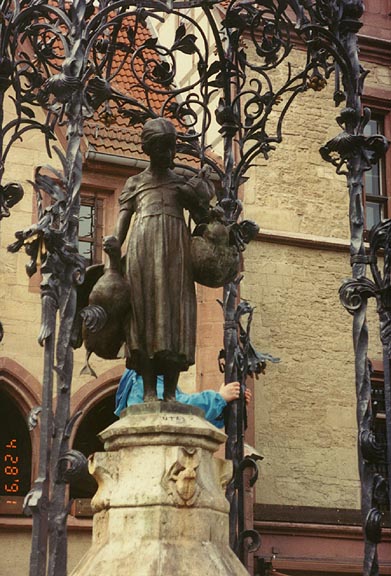
Goose Girl statue
(university students must kiss her on graduation)
![]()
![]()